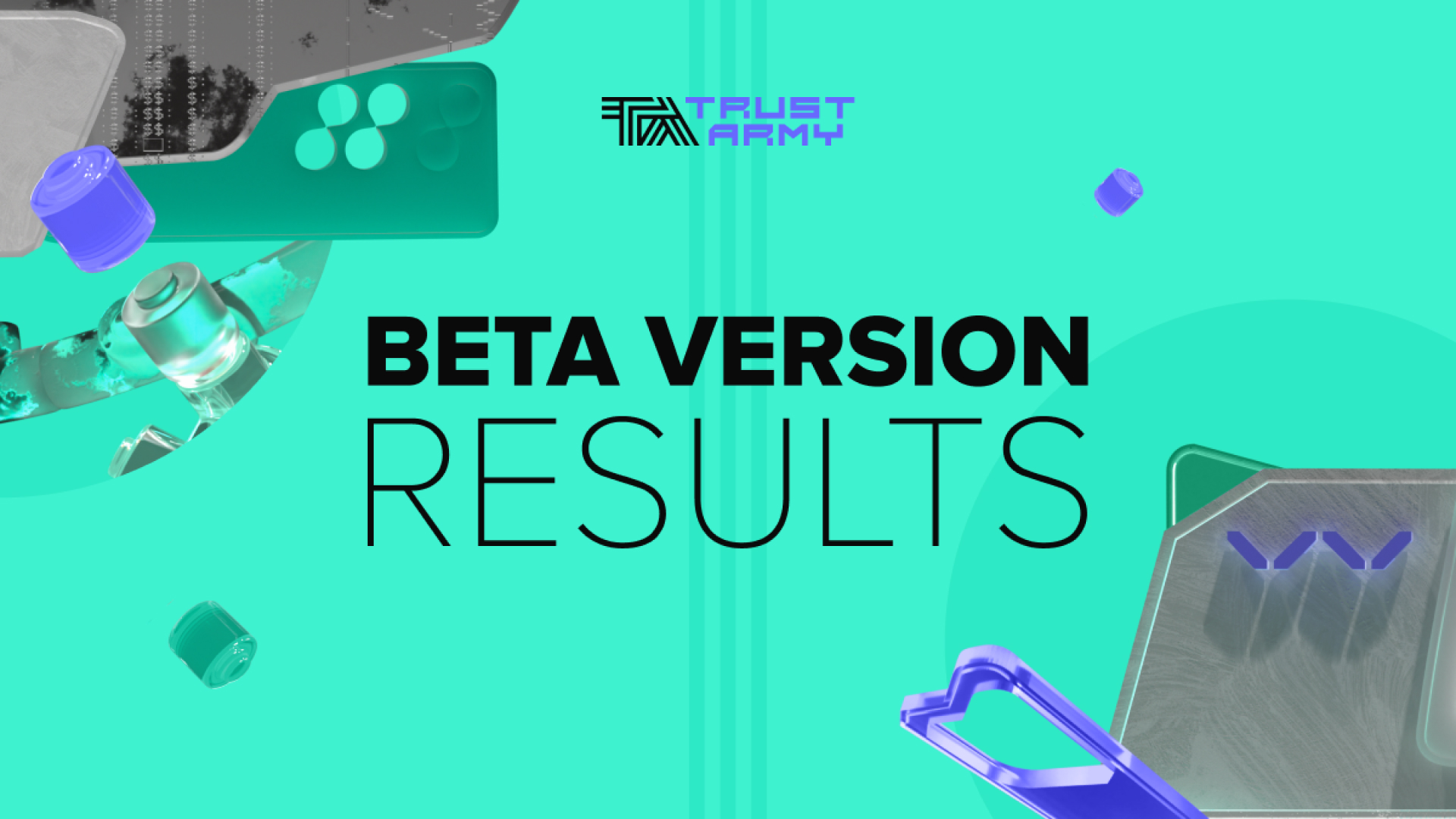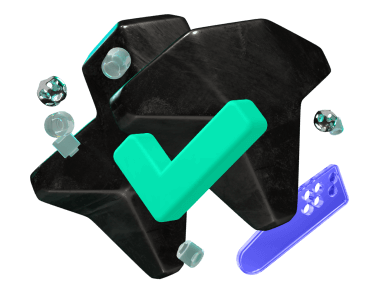Trust Army Beta: Key Results

The development of Trust Army 1.0 is on its track. This week, we released the first Development Update to keep you informed about the tasks completed during the last sprint. While the Dev Team continues to bring us closer to the full release, let’s oversee the main results achieved during the Beta version operation, which ended on March 27.
Trust Army Beta, also the MVP, was a pivot assignment set designed to make users quick-start at Trust Army, test the platform functionality, and try their hand at first blockchain data research. The Beta version is designed to identify bottlenecks, test hypotheses, and consider its findings in the full version.
The main test objectives of Trust Army Beta were to:
- Define the industry and market feasibility
- Review the platform usability, workflow, and high-load infrastructure
- Testify the ability of users to cope with the suggested data collection tasks of different complexion levels
The testbed had been underway for 98 days, which met the rigorous timeframe and the average duration required by the test objectives.
Trust Army Front End and Back End

From the front-end side, the Dev team should create the platform according to the provided design. The main task was not to overload the website with unnecessary technologies and libraries but to make it convenient for further support and development. Also, it was necessary to make the platform adjustable and accessible to various devices.
Since the design is not conceived of standard libraries, the team has developed its system consisting of components, iconography, and styles. Thus, it was possible to achieve website usability and compatibility without being loaded with optional logic. During the Beta development, the team minified and verified the code to take out everything redundant and unnecessary.
From the back-end side, the objective was to create a correct and convenient architecture, to implement the authorization with Discord for further use within our platform. We needed to choose technologies that allowed us to scale our system. Besides, due to a startup’s nature, the product should provide us with a fast development speed from scratch.
So our tech stack consists of but is not limited of:
JavaScript, JustValidate, Discord API, MySQL, DigitalOcean.
Reports Submission Activity

During the above period, 4,348 users registered on the platform and were proposed to complete missions (reports) regarding the information on tokenomics and on-chain data collection on 508 Web3 projects.
As part of the Beta version, all users had the opportunity to complete missions unlimited times, so the number of reports sent is more than ten times the number of presented projects, which is 5,296 reports.
We can note the different levels of user activity on the platform. There were users whose user journey did not end with report submission and those whose reports exceeded 90% of the total number of presented projects.
We also recorded the results of completing missions from different devices. The data indicates that platform users prefer using Desktop devices, rather than Mobile ones, which also provides higher payouts for valid reports. Thus, the Desktop version usage was 86.6%, while the Mobile version was 13.4%.

Tasks Completion Conclusions
The Platform Beta provided users with the first mission consisting of 7 tasks.
To complete the mission, a member needed to:
- Select one of the projects published on CoinGecko from the list
- Add all the token addresses on all relevant networks
- Attach a CSV file for each network
- Find information that describes tokenomics
- Attach a document that describes tokenomics
- Decrypt tokenomics by studying the document and giving the information regarding allocations, token generation events (TGE), cliff and vesting periods, and release schedules
- Enter a HackenAI wallet address to receive the first payment for the submitted report
- Tap the ‘Send Report’ button
Before starting a report submission, Trust Army provided a detailed guide to help newcomers research blockchain. It included explanations on Web3 research required for Trust Army, followed by animated graphics to mark what was required to find for the report submission.
Reports Submission Success Rate
In light of many non-Web3-advanced newcomers joining the platform, the interim success rate is 47.4%, indicating the growing interest of users in data collection and eagerness to learn the cryptocurrency basics.
Basic tokenomics definitions were familiar to the majority of Trust Army users since the Beta started. At the same time, some issues regarding Cliff and Vesting periods and Token Generation Events occurred when users were completing tasks with the highest complexity.
Users successfully found tokenomics, issuances, and tokens distribution even if they were not displaced on data aggregator websites or official websites of offered Web3 projects.
User Success Case

Starting from an entry-level to advanced in crypto, a person can get HAI tokens based on the correct reports he sent. The record payout to a user was more than 94,000 HAI, but overall, payouts for Trust Army soldiers can be unlimited. Hence, the Beta version has shown that the record payout for correct reports, submitted by one user, can be compared with the average Web3 Data Analysts’ wage.
Currently, our team is validating all sent reports with an accelerated schedule to draw appropriate conclusions about the level of transparency of the projects and to make payments in HAI tokens to all Beta version users.
You can see interim data on the best-performing users regarding the users’ success rate and the number of sent reports. Once the Trust Army team validates all the reports, we will publish the final success rate based on the results of the Beta version.
Detected Bottlenecks
During the Beta version operations, we’ve faced the problem of validating large data arrays. Now, the team is already reworking the system. During the validation of reports, we single out the most successful users to offer them to become validators based on their success rate. It will take some time to check the full amount of reports. However, the Beta version showed an interest in the project’s vision and goals, the willingness of people to make their effort, to study crypto, and to build Web3, where trust is the default.
Overall, the Beta version launch and operations showed its viability and fulfillment regarding the set goals, shaping advantages of its use for Web3 enthusiasts and increasing Web3 transparency and trust.
Both operational and technical results obtained within the Beta version are already being actively implemented in the 1.0 Version to increase its efficiency, convenience, and wide dissemination.
Thanks to all the users who joined the Beta!
Soon, we will provide you with more insights, obtained from the analysis of projects proposed by the Trust Army, and announce our next milestone — the launch of the 1.0 Version with a full range of functions.
Follow us on Twitter for further updates and become part of our community on Discord.

